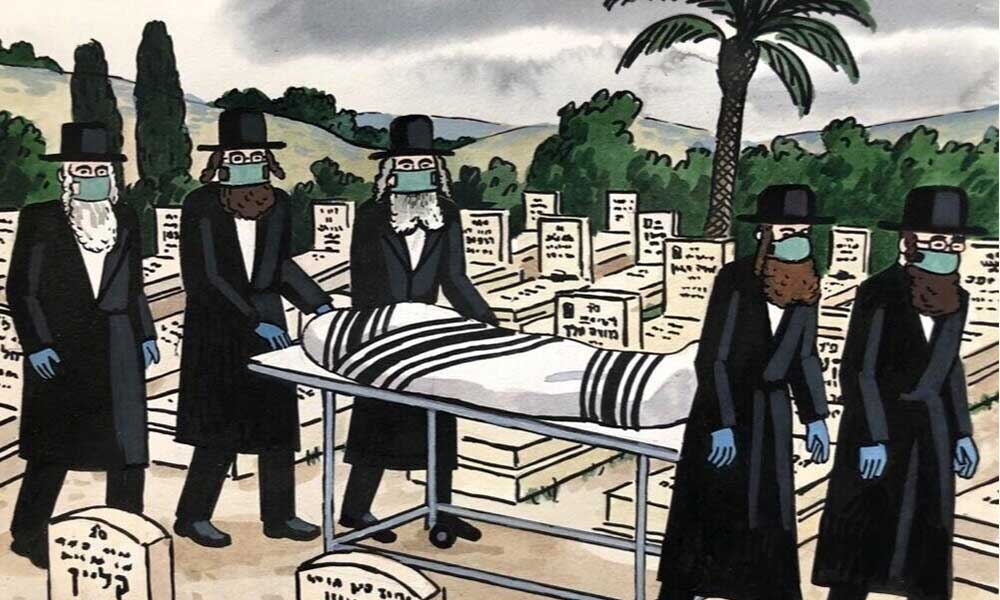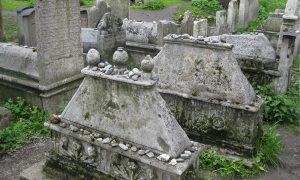The Tradition of Respecting the Dead
How taharah practices have changed during the time of COVID-19.

For thousands of years, Jews have celebrated the same holidays, marked the same life cycle events and practiced the same rituals. Through plagues, pandemics and wars, Jewish communities have found ways to adapt their traditional practices to the events of the time. Today, with the spread of COVID-19, many Jewish traditions have had to change. Perhaps the most challenging to alter has been taharah, the sacred act of purifying the body and comforting the soul of the deceased.
Up until four months ago, when a Jewish person died, a team of trained volunteers from the Chevra Kadisha would conduct the taharah, usually at the funeral home in a special room. First, all extraneous materials on the body are removed. Then, the body is washed and purified. Water from buckets is poured over the body in a continuous flow analogous to the mikvah, washing away any suffering and pain the person experienced during their life. The deceased is then dried and dressed in tachrichim—a white linen shirt, pants and robe, similar to the robes the high priests wore on Yom Kippur. The symbolism of the tachrichim is powerful: There must be no knots so that it can decompose easily; no hems to signify impermanence; and no pockets so that earthly goods remain in this world. Dirt is then tossed into the bottom of a wood box and the body is placed inside. Throughout this process, liturgy is recited. In the last and final prayer, the Chevra Kadisha team asks for mechila, forgiveness, from the deceased if they neglected to do anything they should have according to tradition.
Today, because of COVID-19, this thousands-year-old practice is not possible in most communities. Yet, Chevra Kadishas around the country have created new ways to fulfill their sacred duty. In Piedmont, California, members of a Chevra Kadisha gather virtually using a candle to represent the deceased’s neshama (soul), a bowl with soil to represent the body and a pitcher of water and bowl to represent purification. Sharon Fendrich, a steering committee member of her Chevra Kadisha in Portland, Oregon and author of their new manual for a spiritual taharah, brings her team together virtually as if they were surrounding the met (body of the deceased)while the funeral director covers the body with a tallit.
“If the family can’t be anywhere near them [the deceased],” she says “we feel like we’re carrying the torch.”
Other groups try to get as close to the body as possible. For example, Linda Griff, at the Keneseth Beth Israel Chevra Kadisha in Richmond, Virginia, has coordinated with the funeral home so that while the body is being prepared, members of the Chevra Kadisha are in the parking lot reading the liturgy.
GLOSSARY
Chevra Kadisha
A burial or sacred society
Taharah
A ritual where representatives of the community come together to pray and wash and dress the deceased prior to burial
Tachrichim
White, hand-sewn linen garments in which the deceased is dressed
Shmira
The ritual guarding of the body between the time of death and burial
Aninut
The period of time between death and burial
Met/Meta
Body of the deceased
“If the family can’t be anywhere near them [the deceased], we feel like we’re carrying the torch.”
When the body is moved from the funeral home to the hearse, the team is there to guide the neshama.
The liturgy has also been altered. Some have added a new prayer of apology in the beginning. The leader of the team tells the met or meta that they are sorry they cannot perform taharah according to custom and they hope that what they do brings peace. In addition, some Chevra Kadishas have added the gender designation “they”—tacharuchem—to their liturgy.
Many practitioners have said that while the physical work of taharah is not possible, the ritual has actually become more spiritual. They can focus on the holy intention— the kavanah—of the practice and “feel” the words of prayers and psalms.
And when restrictions ease, some Chevra Kadisha teams plan to visit the grave of each person in their community who passed during the pandemic. At the gravesite, they will sprinkle or pour water and read the taharah liturgy. As David Zinner, executive director of Kavod v’Nichum and the Gamliel Institute, explains, “We don’t yet know what the new normal will look like. But we do know that we will brainstorm and create and try out new practices, new approaches, and new liturgy. We will help shape the new normal.”


3 thoughts on “The Tradition of Respecting the Dead”
ridiculous …….the time effort and MONEY spent on the dead… go to ANY cemetery… EMPTY except for meaningless blocks off stone
just think of this as playground, a picnic ground….. or any useful piece of property
Sorry you can’t appreciate these rituals, which are meaningful to many. Rituals in Judaism can give comfort to mourners and link us to traditions that our ancestors followed. I realize not everyone agrees. Just my own opinion.
Perhaps you might think of the cemetery as something for the living–a comfort for the mourner, a connection to loved ones, to the past, to historyJudaism believes that the body is holy because it housed the soul and that it deserves respect and dignity. Even in secular thinking, we retrieve drowned, murdered, and burned bodies and give them a proper burial or cremation. Dust to dust. The remains become part of the soil.